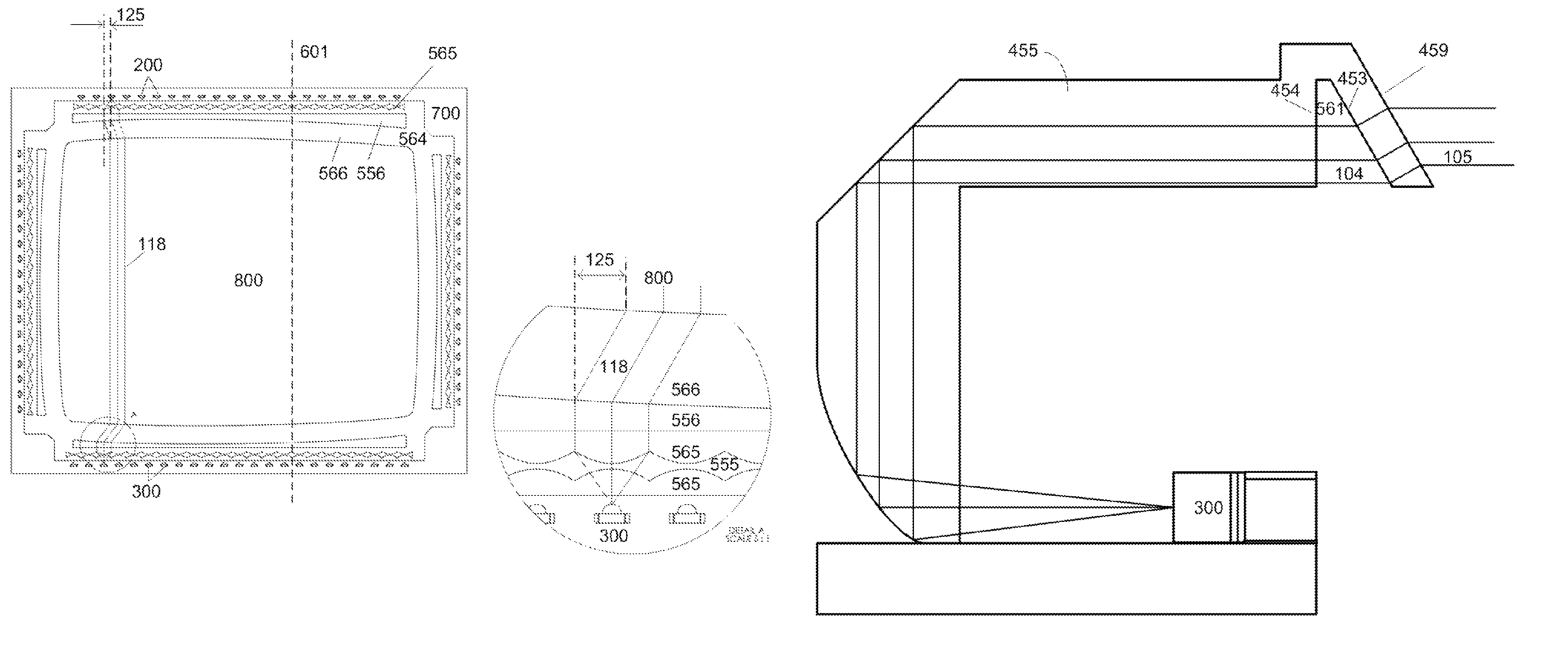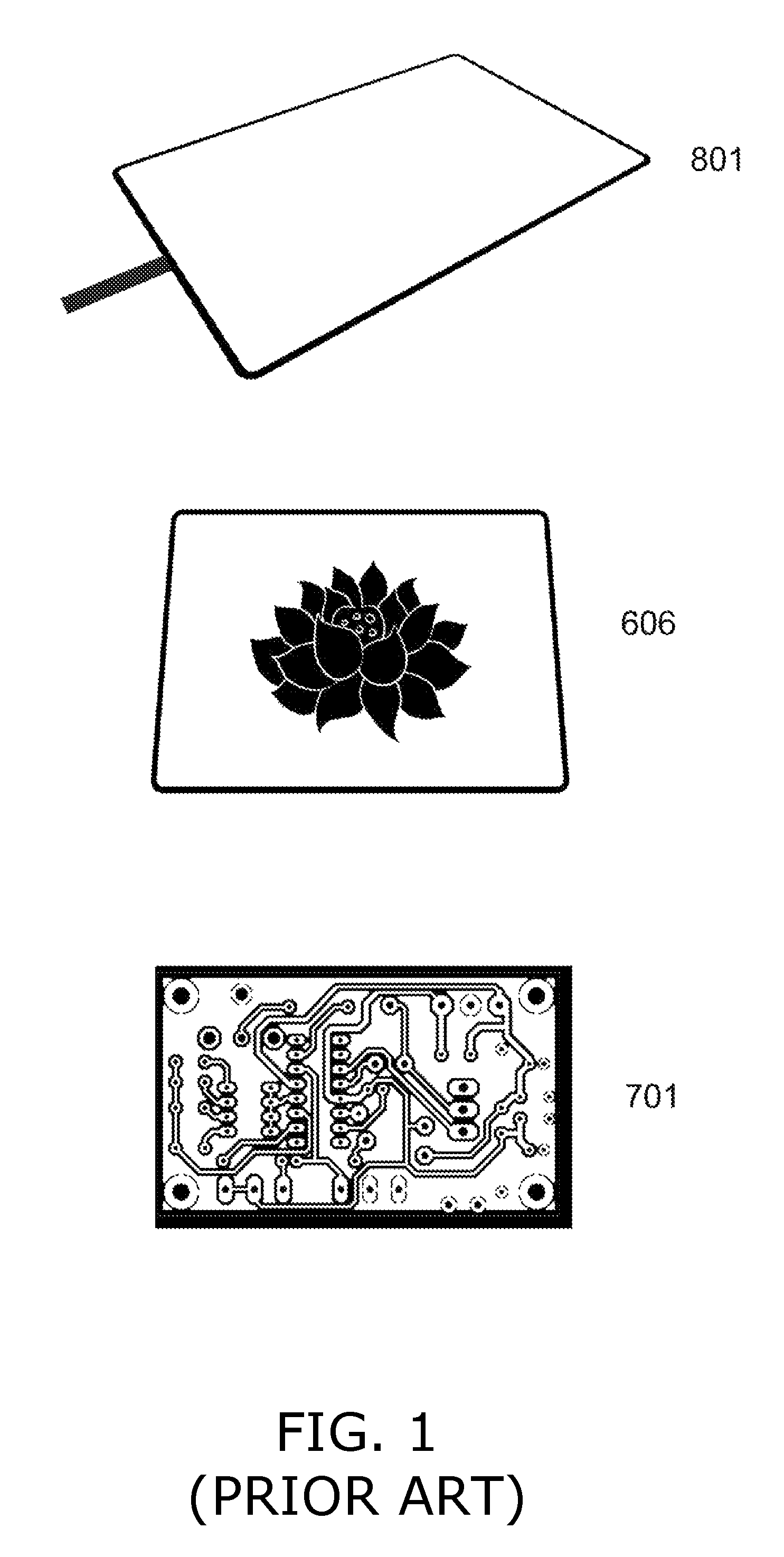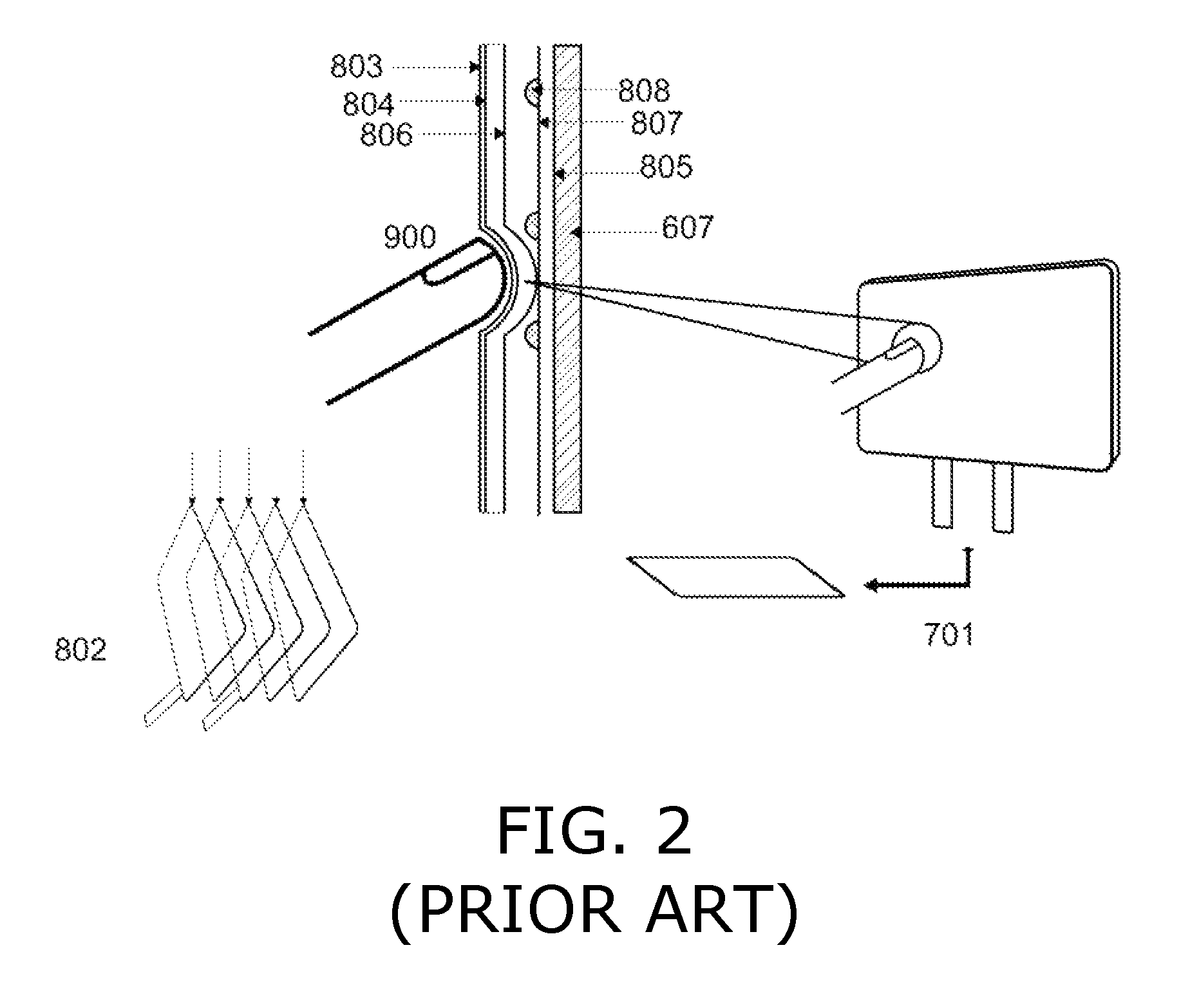Light-based touch surface with curved borders and sloping bezel
a touch input surface and light-based technology, applied in the field of light-based touch input surfaces, can solve the problems of power consumption, screen not fully transparent, system versatility not enough to offer an all-encompassing solution, etc., and achieve the effect of minimizing light leakage and ensuring accuracy
- Summary
- Abstract
- Description
- Claims
- Application Information
AI Technical Summary
Benefits of technology
Problems solved by technology
Method used
Image
Examples
first embodiment
[0360]Such three-sided lenses are used in several embodiments. In a first embodiment, the lens is used without an additional optical component with alternating facets for interleaving neighboring beams. In this embodiment, wide beams cover the screen but do not necessarily overlap to provide two or more detection signals for interpolation. A typical use case for this embodiment is finger input, but not stylus input. The tri-directional lens enables detection on four different axes, to eliminate ambiguity and ghosting in multi-touch cases. The tri-directional lens also provides additional touch location information; namely, four axes instead of two, and the additional information increases the precision of the touch location, even for a single touch.
second embodiment
[0361]In a second embodiment, the lens is used with an additional optical component with alternating facets for interleaving neighboring beams, or with an alternative arrangement providing overlapping detection signals. In this embodiment, overlapping wide beams provide two or more detection signals for interpolation. Typical use cases for this embodiment are finger and stylus input. The tri-directional lenses and the interleaving facets may be formed in two distinct components. The interleaving facets component is positioned closer to its emitter or receiver than the tri-directional component, since the tolerance for imprecise placement of the interleaving facets component is low, whereas the tolerance for imprecise placement of the tri-directional lens component is high. Alternatively, the tri-directional lenses and the interleaving facets may be formed in a single rigid component. For example, a diffractive grating interleaves signals from two sources and also splits the beams in...
PUM
 Login to View More
Login to View More Abstract
Description
Claims
Application Information
 Login to View More
Login to View More - R&D
- Intellectual Property
- Life Sciences
- Materials
- Tech Scout
- Unparalleled Data Quality
- Higher Quality Content
- 60% Fewer Hallucinations
Browse by: Latest US Patents, China's latest patents, Technical Efficacy Thesaurus, Application Domain, Technology Topic, Popular Technical Reports.
© 2025 PatSnap. All rights reserved.Legal|Privacy policy|Modern Slavery Act Transparency Statement|Sitemap|About US| Contact US: help@patsnap.com



